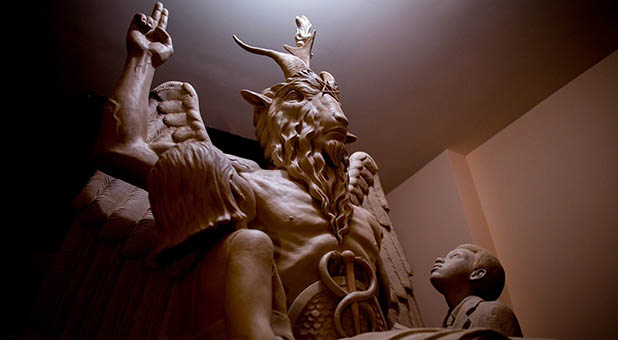Can the Satanic Movement Lead to Political Change?
Joseph P. Laycock, an assistant professor of religious studies at Texas State University, recently wrote an article on a subject that is both alarming and enlightening for Christian conservatives.
“Can a burgeoning satanic movement actually effect political change?” he asks in the headline of a recent article published at TheConversation.com. And while the question may seem absurd, the professor quickly establishes why there’s reason to ask:
In December, [The Satanic Temple] and A24 studios began collaborating on a four-city tour called The Sabbat Cycle, which consisted of screenings of “The Witch” followed by politically driven satanic rituals. The stated goal of The Sabbat Cycle was to inspire a “satanic revolution.”
TST believes that the separation of church and state is currently under attack by radical religious conservatives. They also believe there is a silent majority that opposes this agenda, but remains too apathetic to do anything about it.
The Sabbat Cycle was an attempt to raise political awareness by piggybacking on “The Witch’s” appeal. This is part of larger PR model the group has used since its inception, in which the shocking and the frightening are used to lure media attention to their cause.
As a religion scholar, Laycock said he finds The Satanic Temple “fascinating,” in that it raises serious questions about the First Amendment and religious pluralism. It also challenges the public to reconsider its definition of “religion.”
“To learn more, I attended the Sabbat Cycle at its Austin stop, and spoke with attendees about their religious and political views,” he wrote. As a result of those conversations, he answered a number of questions about The Satanic Temple.
Among them was whether or not it is a religious or political movement, or perhaps both. He doesn’t necessarily come to a conclusion, but the facts he exposed were frightening: It has 17 chapters across the Europe and the U.S. with an estimated 100,000 members.
Laycock’s final question, “Can the satanists win?” would perhaps be better worded as “Can the satanists succeed?” Noting that “major changes to the political landscape seem inevitable” due to the diversity of the millennial generation, he provided the following assessment:
In many ways, TST is the heir to the “New Left” of the 1960s and such figures as Abbie Hoffman and Allen Ginsberg. Events like the “exorcism” of the Pentagon in 1967 demonstrated an understanding of ritual and semiotics: the strategic use of religious symbols could change what the Pentagon represented to the public.
But the New Left also intentionally straddled the line between prank and sincerity in order to draw media attention to their cause. It is contested today what effect the New Left actually had toward the goal of ending the Vietnam War and it is similarly unclear what effect TST might have on America’s political center of gravity.















































